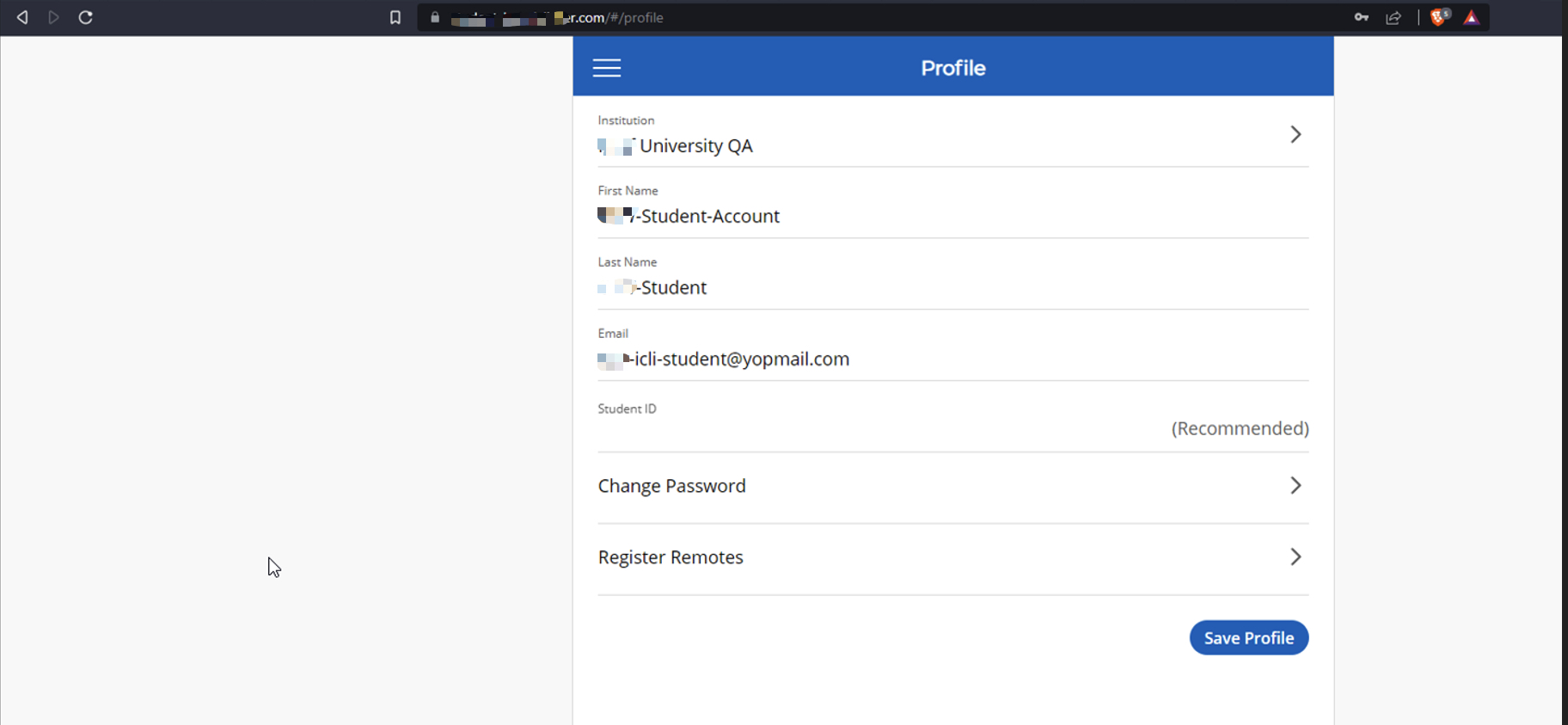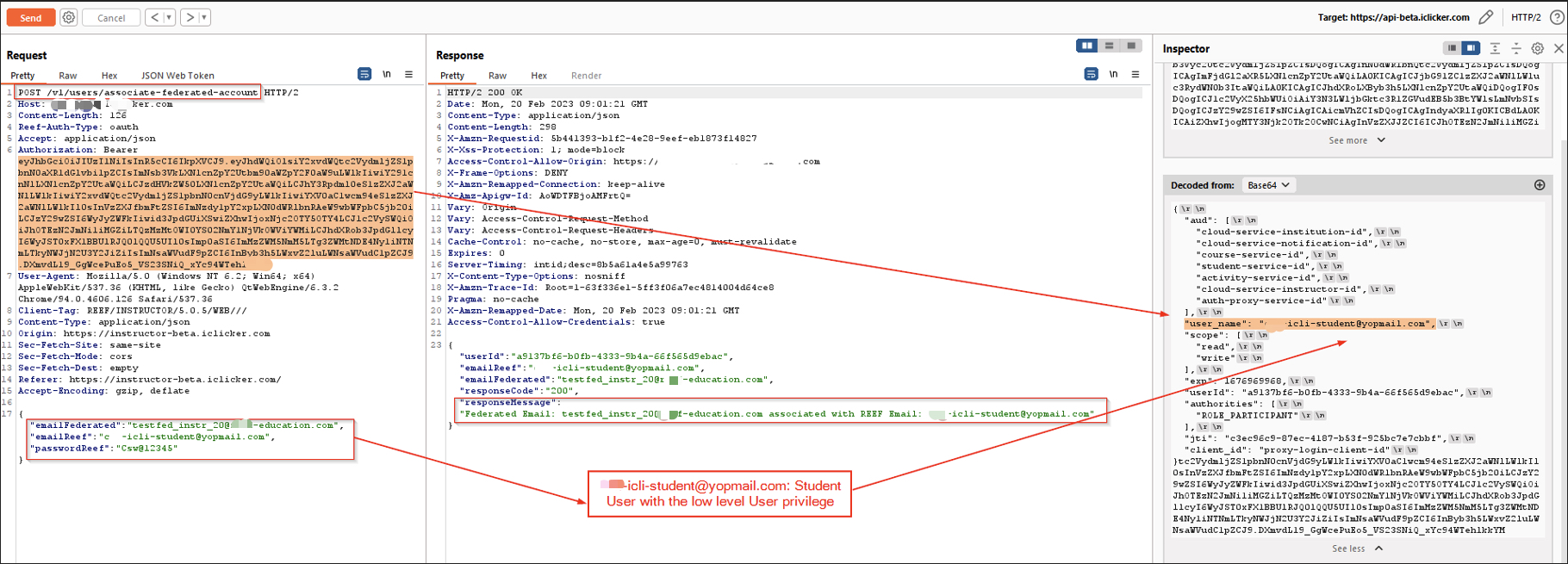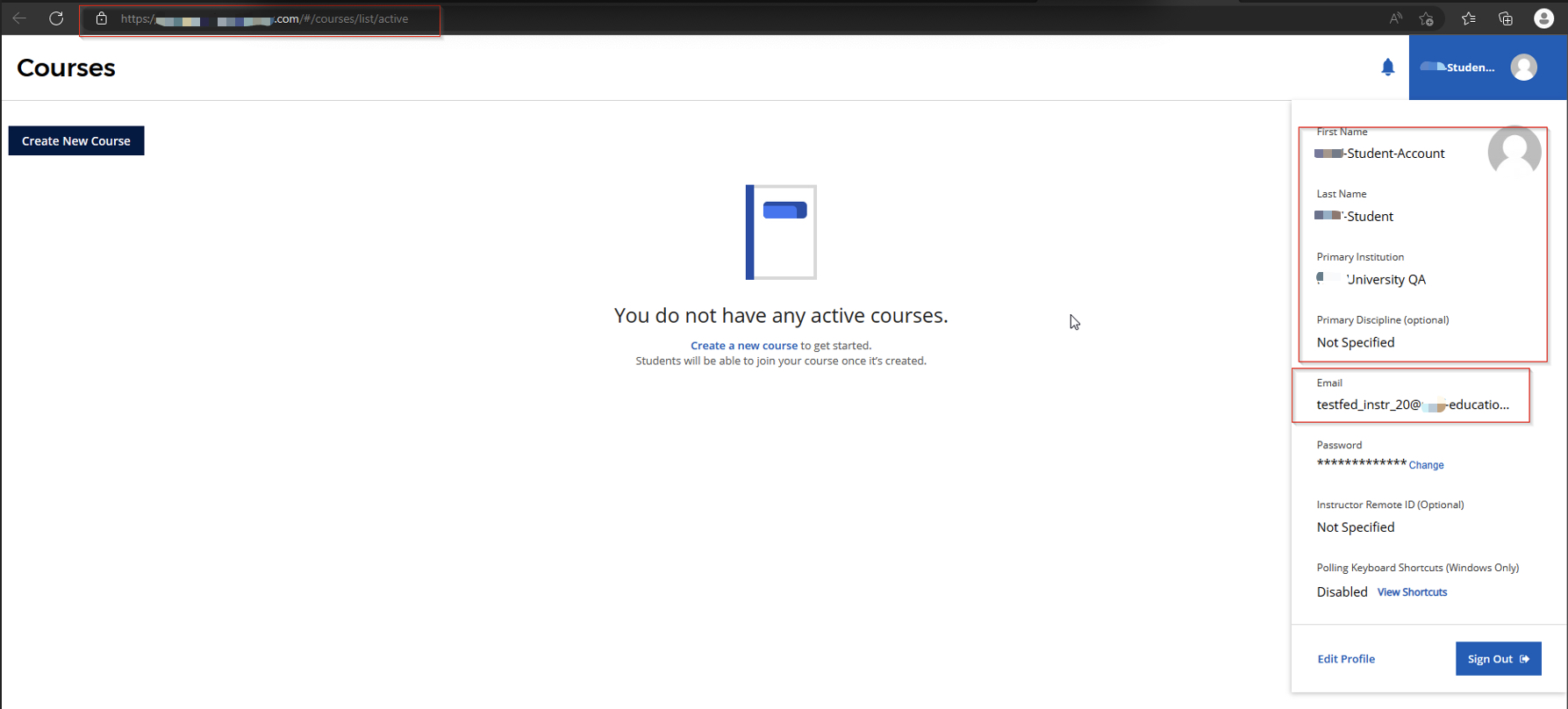OAuth Misconfiguration in EdTech App: From Low Privilege to Full Account Takeover
Published: March 2025
🧠 TL;DR
A subtle OAuth misconfiguration turned a basic student account into a full instructor-level takeover vector. Through session misbinding, trust flaws in federated linking, and blind endpoint trust, I escalated privileges silently — without phishing, password resets, or brute force.
The exploit chain allowed enumeration of unlinked federated accounts and arbitrary account association — leading to complete privilege escalation.
🗺️ Target Application
The target was an EdTech cloud platform supporting both standard email/password accounts and federated campus logins via OAuth. Users could link their campus identity to the main platform account — and that’s where the issue lived.
- Standard app users (email/password)
- Federated OAuth users (campus logins)
- Loose account-linking mechanism
🔓 Vulnerability Breakdown
Affected endpoints:
/federation/account/association/check/student/federated/associate
These endpoints failed to enforce proper session validation, trusted origin headers, and lacked mutual consent verification. Together, they created a perfect storm for OAuth misbinding and silent privilege escalation.
🔢 Exploit Chain Walkthrough
✅ Step 1: Auth as a Basic User
I logged in as a normal student user, capturing my active session cookie for later use. The goal: abuse this valid session to bind it to another account.

My standard student account prior to federation linking.
🔍 Step 2: Account Enumeration
The endpoint /federation/account/association/check was accessible anonymously. By sending POST requests with identity parameters, I could determine which federated identities were already linked — and which were still “available”.
This effectively became an oracle for valid identity IDs.

Checking account association status via open federation API.
🔄 Step 3: Link the Accounts
I crafted a POST request to /student/federated/associate:
{
"victim_identity_id": "X",
"attacker_account_id": "Y"
}Headers:
Cookie: session=[student_session]
No verification occurred to confirm that I owned either the attacker or victim identity. The server simply linked them.

Federation successfully linked without any ownership validation.
💥 Step 4: Full Takeover
Once associated, my student session gained access to the victim’s account — including instructor tools, class data, and personally identifiable information (PII).

My session post-association: now operating under instructor-level privileges.
📦 Real-World Fallout
- Instructor accounts hijacked silently
- Full access to courses, grades, and user data
- Privilege escalation from student to teacher
- Potential for automation and mass exploitation
🛠 Techniques & Approach
- Deep understanding of OAuth and session-binding logic
- Manual probing of federation endpoints
- Creative chaining of passive and active responses
🔒 Remediation Strategies
1️⃣ Session Binding
Link actions must verify active ownership of both the initiating and target accounts.
2️⃣ Rate Limiting
Protect association-check endpoints from enumeration via brute force or batching.
3️⃣ Explicit Consent
Require user confirmation before linking accounts or merging identities.
4️⃣ Notifications
Notify users of new or removed federation associations in real time.
🧠 Final Thoughts
OAuth depends on trust — but trust must always be verified. This bug didn’t break crypto or require social engineering. It simply exploited misplaced confidence in session state and linking assumptions.
In federated systems, assuming “identity equals ownership” is dangerous. One missing session check can mean total compromise.